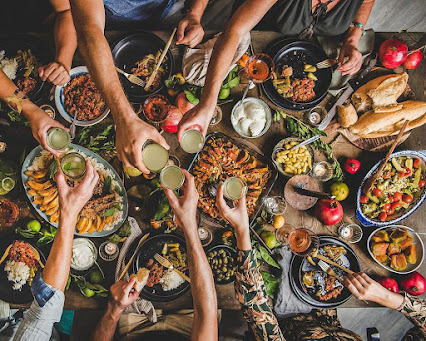Ang Chong Yi Savouring Symphonies: Palette to Palate and the Harmony of Flavors
Have you ever wondered how some dishes can create a symphony of flavours in your mouth while others fall flat or clash? How do chefs orchestrate the perfect balance of taste, aroma, texture, and presentation to delight your senses? In this blog post, we will explore With Ang Chong Yi Palette to Palate: A Journey Through Artful Plating and how he uncovers hidden culinary gems with his remarkable palate.
What is Flavor Harmony?
The art of creating a pleasing experience for one's taste buds through the deft blending of various components is known as "flavour harmony." This approach to cooking is predicated on the notion that certain flavours go naturally well together, whereas others are incompatible with one another.
Take, for example, the time-honoured combination of chocolate and mint, which creates a contrast that is harmonic, as opposed to the inappropriate pairing of chocolate and garlic, which is a combination that is guaranteed to ruin both flavours. It encompasses not just the flavour but also the scent, the texture, and the way the food is presented.
How to Create Flavor Harmony?
One of the most useful tools for creating flavour harmony is the flavour profile, which is a description of the characteristics and qualities of a flavour. The flavour profile can help you understand the complexity, intensity, and balance of a flavour and how it affects the palate. The flavour profile can also help you compare and contrast different flavours and find similarities and differences.
Some of the common elements of a flavour profile are:
● Sweetness: Taste that is seen to have been enhanced by the
addition of sugar or other sweet substances.
● Sourness: The sensation of acidity or tartness in food,
which can lend flavour characteristics such as freshness, brightness, or
sharpness.
● Saltiness: The sense of salt or other salty components in
food, which can give depth, complexity, or contrast to a flavour.
● Bitterness: The experience of bitterness or astringency in
food, either of which can contribute to the depth, balance, or intensity of a
flavour.
● Umami: The experience of a savoury or meaty taste in
food, known as umami, which can give a flavour more depth, richness, or
satisfaction.
● Spiciness: A flavour can be made more exciting, stimulating,
or challenging by the addition of spiciness, which is the feeling of heat or
pungency in food. Spiciness.
● Aroma: When you smell something, you get an aroma.
Aromas can give a flavour more depth, subtlety, or mood.
● Texture: Texture is the feeling of feel or mouthfeel in
food, which can give variation, interest, or comfort to a flavour.
● Colour: The way we perceive the hue or tint of a food can have a profound effect on how we feel about it.
Conclusion
The presentation
of food, as well as its visual appeal, can shape consumers' expectations.
According to Ang Chong Yi From Past toPlate A Historical Journey Through Iconic Dishes, gastronomic traditions
and scientific principles all play a role in the formation of flavour harmony,
which is a delicate interplay.




Comments
Post a Comment